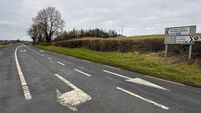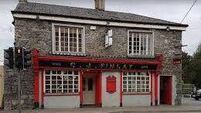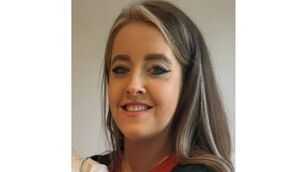Historic Kildare Brigid's Well restored

The cleaned sculpture at Kilcullen's St Brigid's Well.
A unique sculpture in Kilcullen's Valley Park has been restored to its original glory after a professional cleaning under expert supervision. St Brigid Feeding the Poor was commissioned from the late artist and sculptor in Newbridge College, Fr Henry Flanagan OP, by the then Kilcullen Community Council and unveiled at St Brigid's Well in the Valley in 1977.
Through the decades it was targeted on various occasions by graffiti vandals. In 2005 it was defaced with green paint, and a swastika was drawn on the figures. For many years subsequently it was protected by a perspex sheet. But the perspex eventually became opaque, and was disposed of. In 2014, someone covered the sculpture in aluminium paint. “We believe not with any malicious intent, but hoping to protect it from further damage,” says Noel Clare of Kilcullen Community Action, which commissioned the recent cleaning as a Brigid 1500 local project.
The restoration work on the delicate Portland stone, which required specialist skills, was carried out by contractor Neil O'Dwyer and supervised by local conservation architect Laura Bowen. The project was funded with a Brigid 1500 grant from Kildare County Council, but the work was delayed by the poor weather of this past summer. Some further repair work is still to be done.
The grotto in which the sculpture is installed was part of the development of the Valley Park from a riverside scrubland, bought by Kilcullen Community Council in the mid-1970s. A series of fundraising initiatives were led by the late Jim Collins, earning him the sobriquet 'Mr Valley'. Tens of thousands of pounds were raised, enabling the completion of a walkway through the former wilderness.
Trees and shrubs planting by the late George Speirs of Burtown Nurseries in Athy form the basis of the shape and biodiversity of the park today. A natural stone low wall built the length of the park culminates in the grotto, all of which was built by a local pair of craftsmen, Paddy Brangan and John Sherlock. The park was officially opened in 1978 by Sylvester Barrett TD, Minister for the Environment.
Though records of the well being attributed to St Brigid go back to the Schools survey by the National Folklore Commission in the 1930s, and further, there are previous references to it as St Moling's Well. Moling (614-696) was the second Archbishop of Ferns. Born in Brosna, Co Kerry, he is reputed to be buried at the former monastic settlement of St Mullins, Co Carlow. It's thought that the well may have been renamed in honour of St Brigid when the parish Church of the Sacred Heart and St Brigid was built in the late 1800s.
Meanwhile, all the interest in Brigid 1500 has had an unexpected effect on the well. Small religious items are being left there. "It's the first time in my memory that this has happened," says Julie O'Donoghue of Kilcullen Library. "I love this — I think it shows a revival in the cult of St Brigid." Julie says people regularly drop in to the Library seeking directions to the well. "We need a sign on the road," she says, adding that perhaps a booklet on the Holy Wells of Kildare, published last year by Kildare County Council, has helped pique interest in the Kilcullen one. Another KCA Brigid 1500 initiative recently completed was the installation nearby of an explanatory sign about the well and St Brigid.
Fr Henry Flanagan was a highly-respected sculptor, and in all he created some 400 works, both religious and secular, in wood, stone, concrete, plaster, plastic, copper, bronze, and enamels. He taught English, history, art and music during his time as a Dominican priest in Newbridge, from 1945. He died in 1992.





